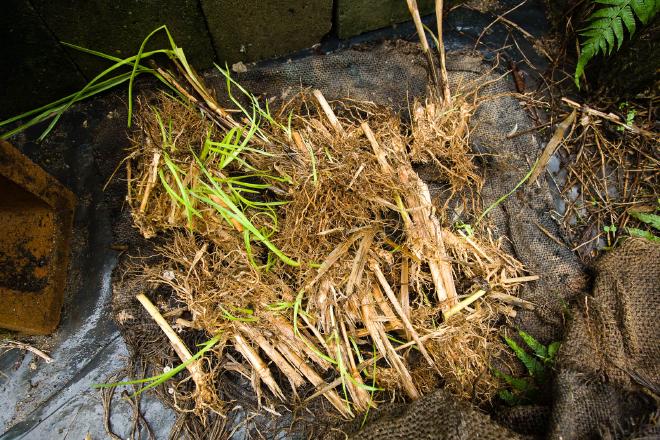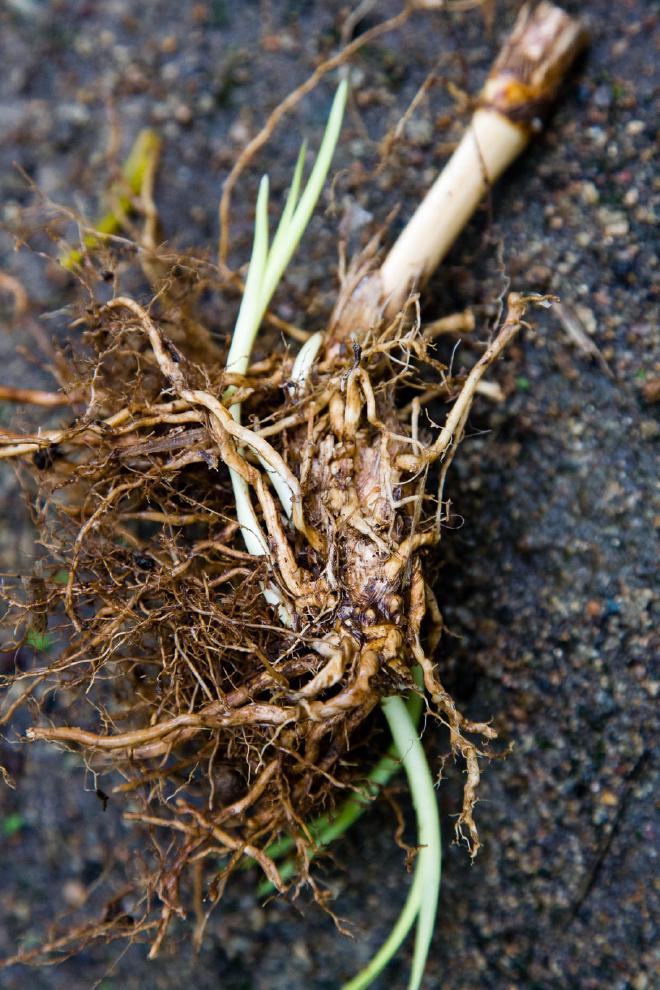Anatomy of a Mature Vetiver Clump
Varied photos of a 4 year old dug up mature Vetiver clump illustrating potential size and crown formation.
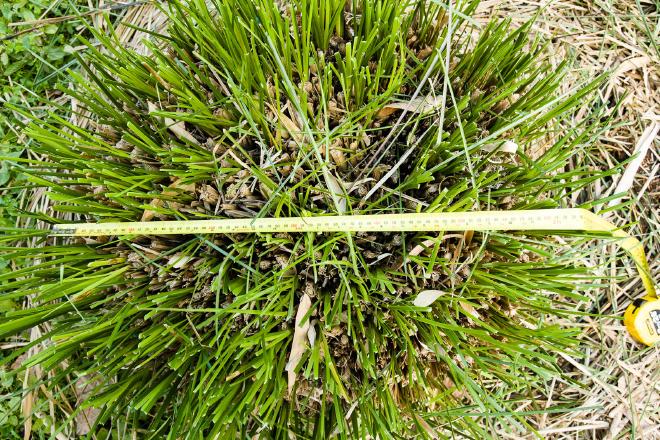
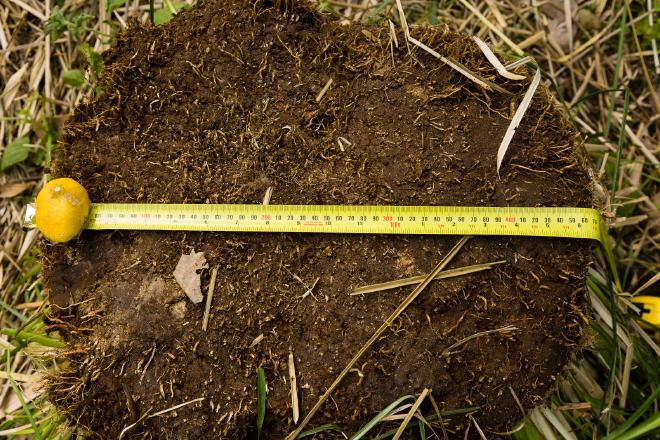
This is a previous photo of the clump at full size.

Here is the clump next to a similar one before being dug up.
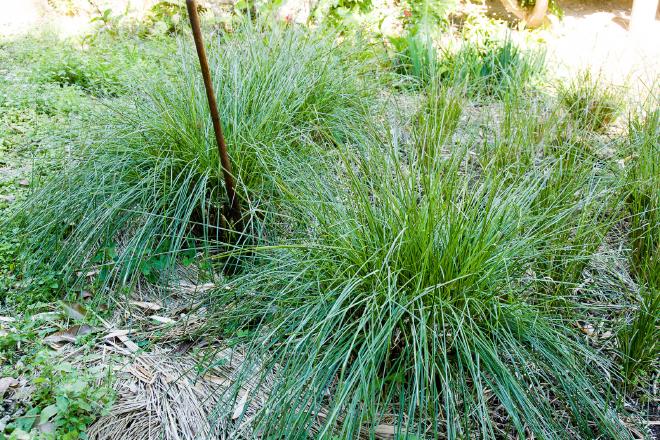
Digging the clump up out of the ground by cutting in at an angle around the entire edge. This is the same method for digging up any sized clump. Note the uncut roots where the shovel could not reach, this required a pry bar and a block of wood to get the leverage to break it out of the ground.
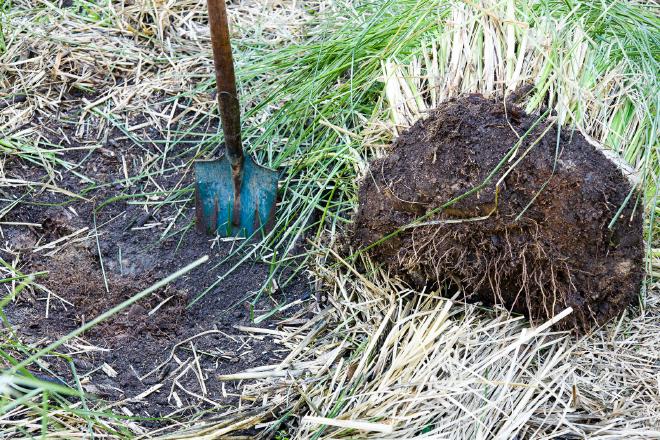
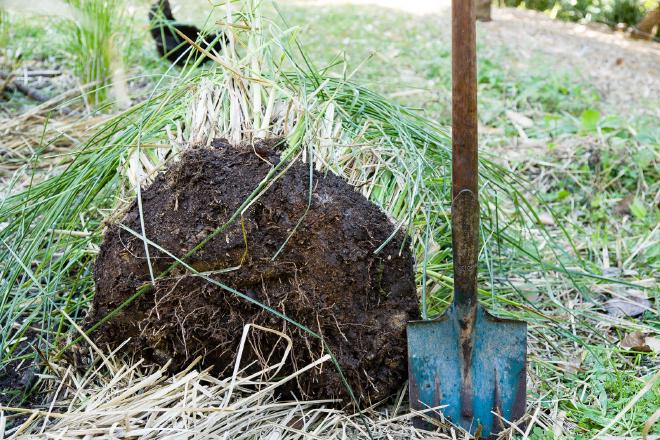
A closer shot of the base of the clump with roots not cut/cut.
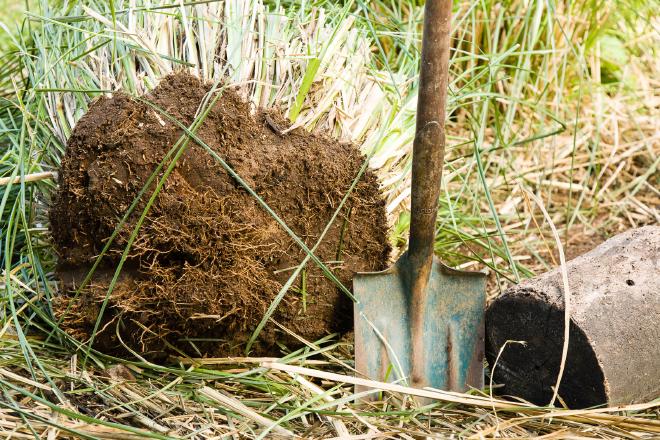
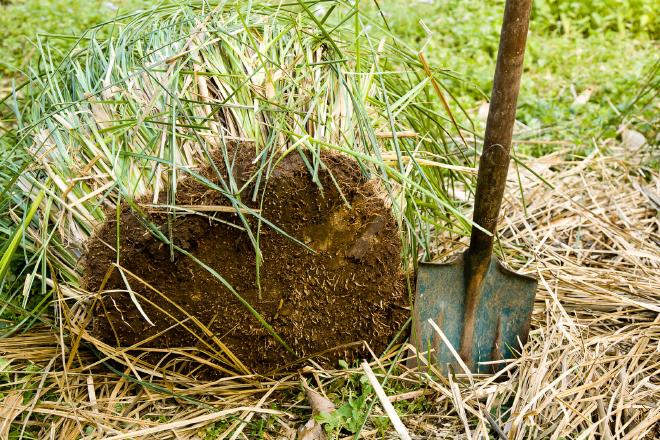
The problem with digging up and dividing mature clumps is that the crown becomes hard and woody which makes it difficult to break apart with anything but a cutting tool. The shovel was used to slice the crown.
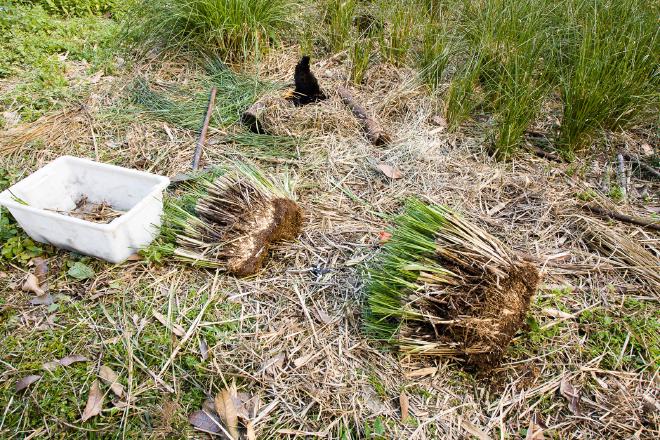
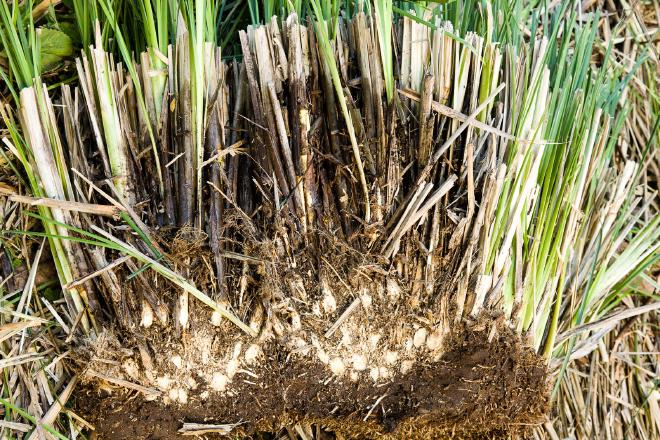
This cross-section shows new tillers being added on to the sides of the clump as it expanded. This photo is also a good example of how water/silt would find it difficult to pass through easily and also shows how much material can be under the ground anchoring the plant into the soil.

After laboured division, the single clump netted 143 usable slips. At the top of the slips are crown pieces which are also a viable piece of propagation material. Waiting for clumps to reach maturity for division is not advisable as the effort expended in dividing the clump is wasted. Dividing at 12/24 months of age is an easier process and requires less physical demands.
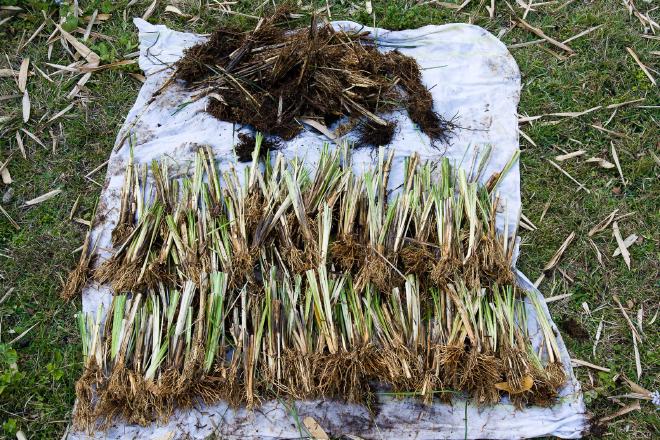
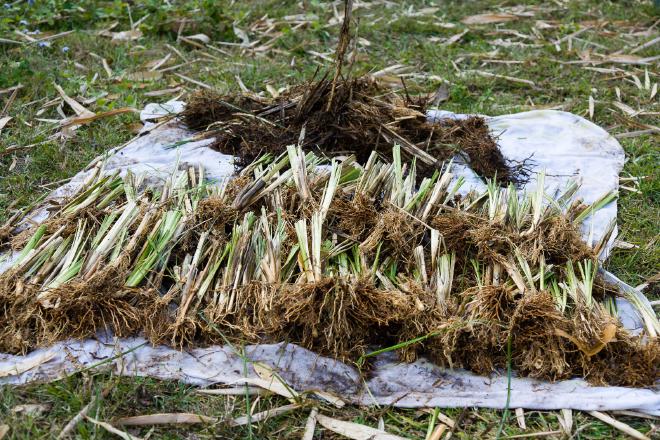
New shoots coming from other crown pieces that were kept moist in a shaded area under jute/hessian. This is how a Vetiver clump responds after fire which makes it resistant to damage as the crown is under the soil.
